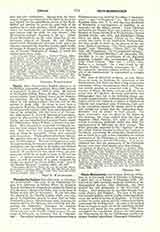

Thulis, JOHN, VENERABLE, English martyr, b. at Up Holland, Lancashire, probably about 1568; suffered at Lancaster, March 18, 1615 or 1616. He arrived at the English College, Reims, May 25, 1583, and received tonsure from Cardinal Guise on September 23 following. He left for Rome, March 27, 1590, where he was ordained priest, and was sent on the mission in April, 1592. He seems to have been a prisoner at Wisbech, Cambridgeshire, when he signed the letter of November 8, 1598, in favor of the institution of the archpriest, and the letter of November 17, 1600, against it. Later he labored in Lancashire, where he was arrested by William, fifteenth earl of Derby, and was committed to Lancaster Castle, where his fellow-martyr Roger Wrenno, a weaver, was confined. They managed to escape one evening just before the Lent assizes, but were recaptured the next day. After that he was imprisoned with thieves, four of whom he converted. These were executed with the martyrs. Thulis suffered after three thieves. His quarters were set up at Lancaster, Preston, Wigan, and Warrington. Wrenno was hanged next, and, the rope breaking, he was once more offered his life for conformity, but ran swiftly to the ladder and climbed it as fast as he could, saying to the sheriff, who remonstrated, “If you had seen that which I have just now seen, you would be as much in haste to die as I am now”. A curious metrical account of their martyrdom, as well as portions of a poem composed by Thulis, are printed by Father Pollen in his “Acts of the English Martyrs” (London, 1891), 194-207.
JOHN B. WAINEWRIGHT

